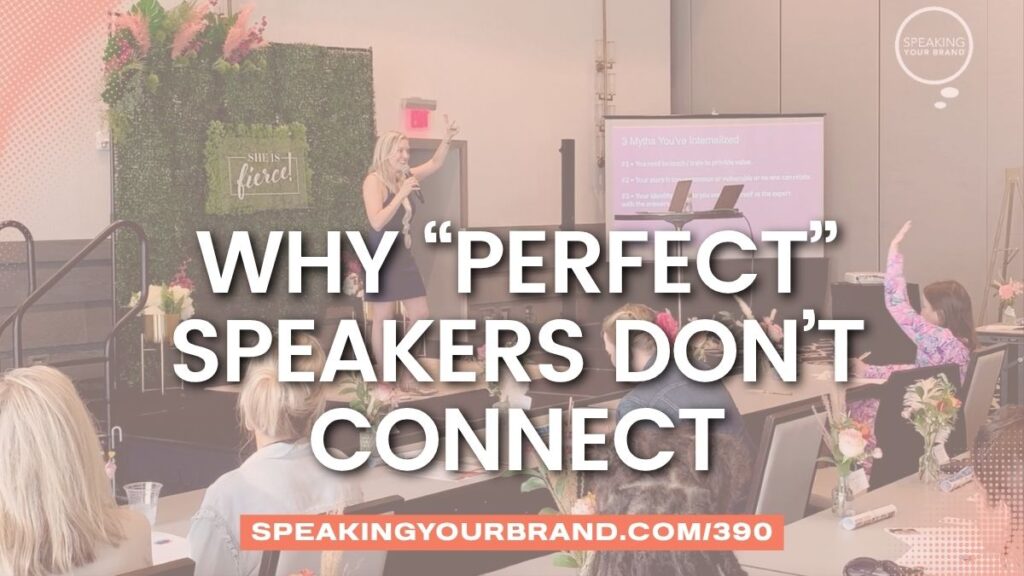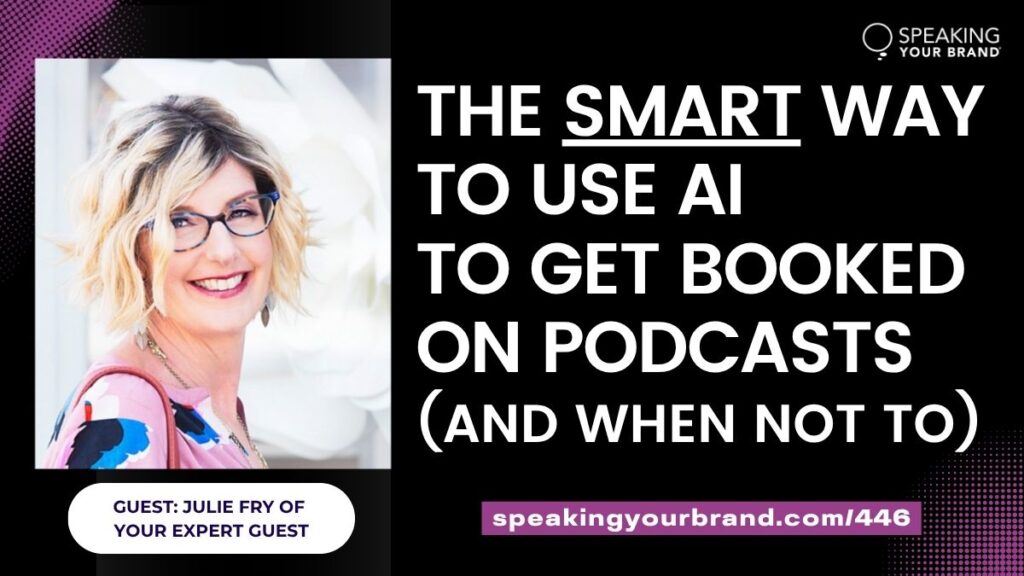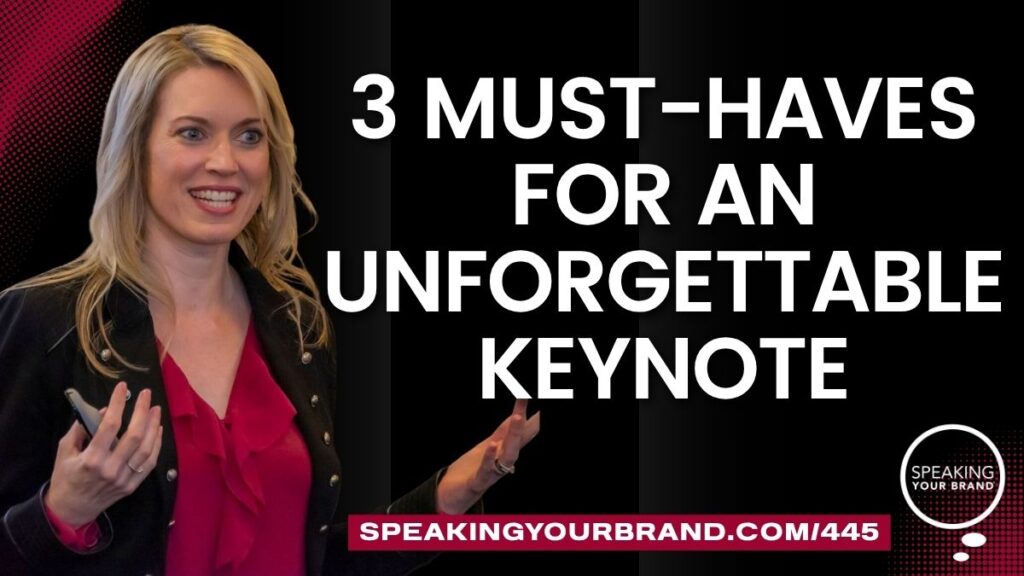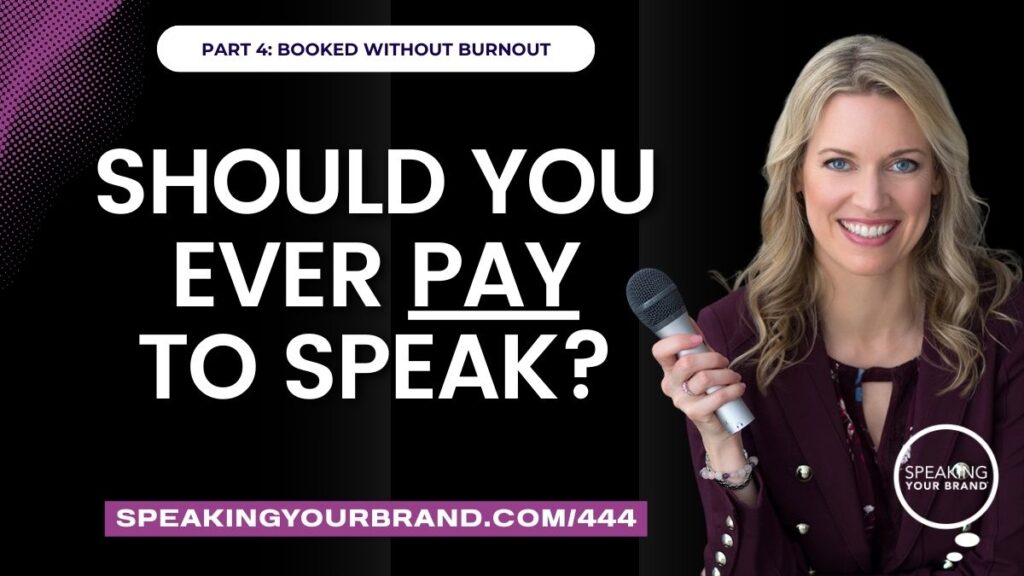402-SYB-Solo-Clarity.mp3: this mp3 audio file was automatically transcribed by Sonix with the best speech-to-text algorithms. This transcript may contain errors.
Carol Cox:
Struggling to get clarity on your ideas? Here’s how to get out of your own head on this episode of the Speaking Your Brand podcast. More and more women are making an impact by starting businesses, running for office, and speaking up for what matters. With my background as a TV political analyst, entrepreneur, and speaker, I interview and coach purpose driven women to shape their brands, grow their companies, and become recognized as influencers in their field. This is speaking your brand, your place to learn how to persuasively communicate your message to your audience. Hi and welcome to the Speaking Your Brand podcast. I’m your host, Carol Cox. I hope you’ve enjoyed our recent episodes. Last week, we talked about strategies for getting momentum on the speaking circuit with one of our thought leader Academy grads, And the week before that, we talked about why introverts make great speakers and leaders. Today, I want to talk about how you can get clarity on your ideas, because I know you want to have impactful talks and presentations. You want to make a positive impact on your audience. You want to develop your thought leadership and your brand and your business and your ideas matter. But I know from talking to so many of you that it all feels a little bit messy, or maybe a lot messy and muddy. You’re not sure which of your ideas are the best ones, which to include in your presentations and talks, and how to make sense of all of it.
Carol Cox:
I went through the surveys that we have our thought Leader Academy grads fill out after they finish the program, and here’s what they say consistently. As far as the number one problem or challenge that they were facing when they decided to enroll in the program, they say things like, quote, I had too many ideas swirling around in my head, and I knew I needed outside expertise and guidance to organize my thoughts. Another woman said my ideas were scattered, and my confidence lacked the belief that I could deliver an idea that could inspire others. Another woman said that she really needed help organizing her thoughts in order to create a coherent message and a compelling talk. So an on and on. So know that you are not alone. It is hard for our own selves to get clarity on your ideas. That’s why I want to help you with this episode. I remember a console call that I had with a woman, and you may be in this place as well. And she said to me she wondered if she needed to figure out her idea first before joining us in the Thought Leader Academy, And I told her, no, that’s actually what we’re here for. If you wait until you figure out what your idea is, number one, you’ll probably be waiting a long time. But number two, you’ll be doing a lot of that hard work on your own. When you really need a coach, you need that sounding board.
Carol Cox:
You need that community in order to help you to define and iterate and to evolve your ideas. As I say, we are your idea whisperers. We listen to you and we pinpoint which of your ideas are the ones to go forward with and how to make sense of them all together. If you would like to join us in our Thought Leader Academy, we only have two start dates left for the rest of 2024. We have August and we have October. You can get all the details including the dates, the pricing and so on as speaking your brand.com slash academy. Again, that’s speaking your brand.com/academy. Now let’s get on with the show. Why is it so hard for us to get clarity? I know how frustrating this feels because I feel this frustration myself. This is why I’ve worked with a book coach to help me develop my ideas for my book. Because even though I know what I want my book to be about, I still have, like you, all those ideas swirling around in my head. It kind of makes sense, but it kind of doesn’t. And then I get analysis paralysis. I start procrastinating, I start overthinking it. I start organizing more than I should be writing and so on. And I know that’s where you’re at a lot of the times when you’re thinking about your signature talk, your message, or even just presentations in general that you want to put together, we get stuck in our own head.
Carol Cox:
We’ve also been with our ideas for a long time, especially if you’ve been in your career or your business for a while. You’ve had these ideas with you a long time, so sometimes they may even feel a little stagnant, or you may be bored with them because you’ve been with them for so long. But you have to remember, your audience hasn’t been with them that long, and they’re new to them. Your ideas and the way you’re sharing your ideas, your perspective and your stories are new to them. So those are some of the reasons why it can be hard to get clarity on our own ideas. And we really need to have that clarity, because when we’re presenting to our audiences, I want you to think about finding your clear through line. It’s like the trunk of a palm tree, which is very solid, very stable. There’s that palm tree trunk and then there’s some branches at the top. But unlike an oak tree, which has branches upon branches, upon branches and lots of thick trunks in addition to the main one, that’s a lot of times what our ideas feel like, those branches upon branches. We could go off on one direction or we can go off on the other direction. But that not only is it too confusing for you, it’s also to confusing and overwhelming for your audience. You want to think about that clear through line, that solid trunk of a palm tree.
Carol Cox:
So once you have your clear through line, this is what helps you to determine what to include in your talk, what to include in your presentations. Because as I like to say, everything that you include has to hang off of that clear through line has to hang off those branches off of that palm tree trunk. Here’s a few examples of clients that we’ve worked with as we’re helping them to flesh out their ideas, they’ll say things like, well, I wanted my talk to be about leadership, but I also have this idea of self-worth and of belonging and of boundaries, and they’ll name different categories. Now, any of those categories could be the through line. The through line could be about leadership, could be about boundaries. It could be about self-worth and so on. But they have to decide with our guidance and with our questions back to them, what is the through line? Because the talk will be slightly different. The emphasis of the stories and examples they share are is going to be different. If the through line is leadership versus self-worth versus belonging and so on. So that’s why it’s so important to have a clear through line. Now you could end up creating several versions of your presentation. Maybe the through line of one is leadership and the through line of another is self-worth. And of course, there are things that are going to be in common with both of those presentations.
Carol Cox:
But as far as the emphasis you’re making to your audience, it has to be clear what that through line is. And that’s what we do at the very beginning of the Thought Leader Academy is we help you to do that. Having a framework, creating your own framework is also extremely helpful for getting clarity on your ideas. You can create an acronym, an alliteration, a visual shape. Maybe you have stages that you’re taking the audience through as far as your framework, and it is so fun to see our clients come up not only with their own frameworks, they’ll come up with acronyms and different visual shapes, but they also think of ideas for each other. While we’re on the group calls, they’ll be like jotting down acronyms or even use ChatGPT to come up with acronyms on the spot. Now you can hear some of our thought leader Academy grads on the episodes that we’ve done, where they’ve delivered a ten minute version of their signature talks. On our LinkedIn live show. You can scroll back through the podcast feed to find them. But now, here’s the biggest reason it’s hard to get clarity on your ideas, along with being stuck in our own heads or being with our ideas for too long and so on. It’s because you’re stuck in the expert trap. It’s because you want to give your audiences everything you know, everything you’ve learned over the past five years or ten years or 15 years or 20 years of your career.
Carol Cox:
So of course it feels overwhelming to figure out how to convey all of that in a 30 minute or 45 minute talk, even an hour talk or a half day workshop. It’s overwhelming to figure that out because you can’t you can’t possibly share with your audiences everything you know, and it would just be too much. And even in a half day or a full day workshop, it’s because you’re too focused on information and conveying that rather than on transformation. I want you to think of yourself as a speaker, as a leader, and as a curator. You’re curating the best pieces of content to share with your audiences those stories, those client examples, those fun cultural references, the use of humor so that your audience can truly understand where they’re at, their goal, where they’re getting stuck, those obstacles, and how your approach, your framework, your methodology, your big idea is going to help them to transform where they’re getting stuck so that they can get past that to what they want to accomplish for themselves. So as you’re sitting down and thinking about your presentations and your talks and your all your ideas and content pieces, first think about that palm tree, that through line, but then shift from thinking about all that information and instead think about the transformation, that paradigm shift, that aha moment, that lightbulb moment that you’ve had that you now want your audience to have related to your topic.
Carol Cox:
Here are some things you can do to help make this happen. First is to write by hand instead of typing on a computer. Grab a piece of paper and a pen or pencil and just start writing out ideas for your talk. Put it into a rough outline. You can even draw visual diagrams. So draw that palm tree with the branches on it. Or draw some Venn diagrams, or just draw acronyms or different things like that. Just that act of writing by hand and drawing. And the drawings don’t have to be good. You just see the drawings I do when I work with clients on our VIP days, they are not good. But the point is, it unlocks different parts of your brain than typing on a computer. The second thing to do is talk out loud to someone and have them ask you questions and record it while you’re going along, so then you can transcribe it later so you can use the voice memo app on your phone. You can use zoom to record it and then transcribe it. Just the act of talking out loud can give you so much clarity. Then keeping it in your head, or even just trying to type it out or write it out by yourself. The third thing to do is to read books and listen to podcasts that are adjacent to your topic. So not specifically related to your topic or to your industry, but find those adjacent ones, or even ones that are like way out in left field.
Carol Cox:
Because here’s where you can find intersections of different ideas and how your idea intersects with other ideas that are out there. This will also help you to spot trends and how you can fit your idea into what’s trending. I’m going to talk more about that on an upcoming podcast episode about how to tie your topic to what’s trending. The fourth thing to do is actually step away from what you think about your idea and topic, and instead consider where your audience is. So kind of remove yourself. Take off that expert hat. This is kind of back to this idea of being stuck in the expert trap. Take off that expert hat and instead put yourself where your audience is, who maybe knows a little bit about your topic, but not as much as you do. Where are they at? Where are they getting stuck, and what’s going to help them to get to that next step, that next stage where they need to get to. So those are the four things that you can start doing now. Write by hand. Draw those visual diagrams, talk out loud to someone, have them ask you questions, and then record it and transcribe it. Find books and podcasts that are adjacent, or maybe even just really outliers to your topic to find those interesting intersections and trends and then step away from what you think about your idea and topic, and consider where your audience is instead.
Carol Cox:
Now, the other reason why it’s hard for us to get clarity on our ideas is that oftentimes we’re faced with self-doubt. We think, do our ideas matter? Do our stories matter? If I can’t make sense of my ideas, are they really good ideas? So we’re facing this resistance. And I actually think resistance is a good thing to be faced with. Resistance is good because I believe it tells you that there’s something there. There is something where you need to dig a little bit deeper to get to that vulnerable part, to get to that transformation. Because after all, you are the messenger for your idea. Vulnerability is hard, but it matters. It matters so much not only to your audience, but also to you. I got a text message from a past client not too long ago, and here’s what she shared with me that she wanted me to share with all of you. And she said I was asked to give a keynote at a conference and she did some research on this conference because she said she’s very discerning about who she partners with as far as speaking engagements. So she decided that this conference seemed like a good fit for her and that she had been doing local speaking as well as virtual speaking during the pandemic at a rate of $5,000 for a keynote or for a workshop style talk. So this company found her online and reached out.
Carol Cox:
She liked their mission, so she went ahead with the zoom call with them and they were great. And she thought, okay, this is a great fit. They asked her her speaking fee and she said, without any hesitation, $25,000 plus travel expenses and lodging. And then she continued, in her text message, they said yes without hesitation, quote. Which made me think that I might have left money on the table. So I asked, what is the normal price they hear? And they said they hear a range from 10,000 to $40,000. So her 25,000 was within that range and not even on the lower range. That’s why they said yes without hesitation. So she said, bottom line, the talk that I give isn’t easy, but it has changed my life, both personally and professionally and the lives of so many people. Let the ladies know that vulnerability wins every time and charge what you are worth without hesitation. And then she concludes, I hope this message makes you smile and offers yet another validation that you matter. And I would just add that you matter. You listening to this podcast, you putting yourself out there, you wanting to put yourself out there to have a better future, to have to make positive change. You matter and your ideas matter. That’s why the work that we do with the women in our Thought Leader Academy lights us up so much. It is the favor it is. Our favorite part of every single week is getting to meet with you.
Carol Cox:
And when we do the VIP days with women to create their signature talk one on one, it truly is a magical process, not only for them, but also for us. I had a client recently and we did the three hours together and it always comes together at the three hours. It’s amazing. And she said, wow, you’ve done in three hours what I’ve been trying to do for the past five years on my own. That is the power of having an experienced coach to guide you through this process. And our thought leader Academy. Not only do you get that one on one VIP day to create your signature talk from scratch from beginning to end, but you also get eight weeks of group calls there, small groups, 8 to 10 women. So you get to learn from each other. You get ideas. Maybe you’ll get an idea for a framework. You get validation, accountability, support and community. We do have different tiers for your needs and budget. And like I said in the intro, we only have two start dates left for 2020 for August and October. You can get all of those details and apply as speaking your Brand.com slash academy. We’re also hosting a one day in-person workshop in Orlando, Florida on October 10th. We’re very excited about this. You can get all of those details as speaking your brand.com/workshop. I hope to talk to you on a consult call someday soon. Until next time, thanks for listening.
Sonix has many features that you’d love including advanced search, powerful integrations and APIs, secure transcription and file storage, upload many different filetypes, and easily transcribe your Zoom meetings. Try Sonix for free today.







